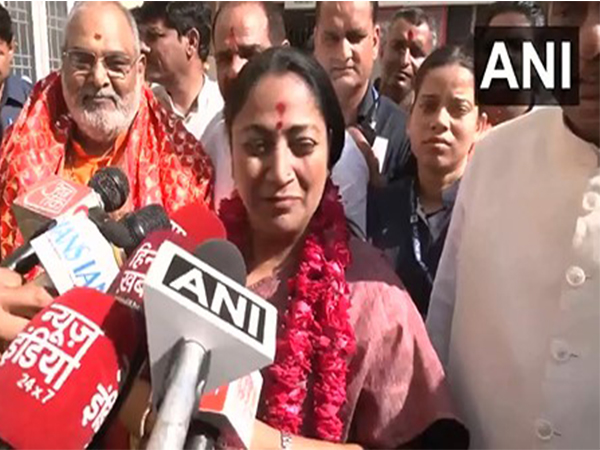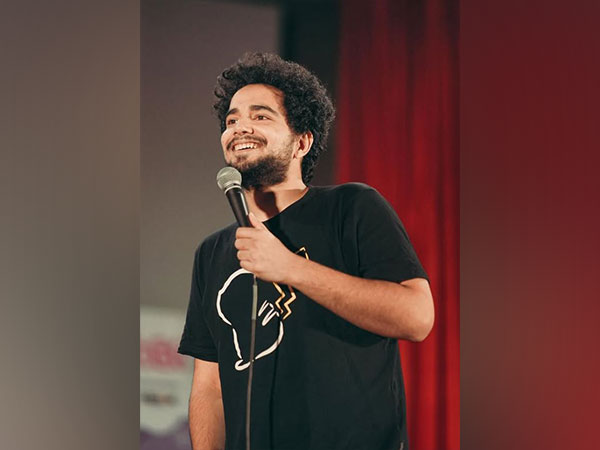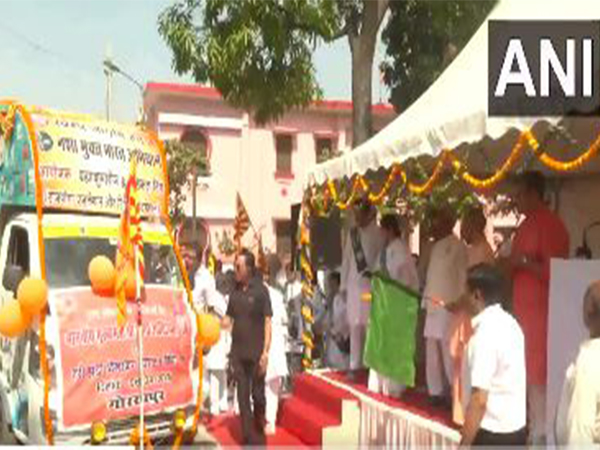Political stability under PM Modi putting rocket fuel into New India: Report
Sep 04, 2023

New Delhi [India], September 4 : United Kingdom’s Telegraph newspaper in a recent article stated that India which was mired by fractious politics has undergone great political stability under Prime Minister Narendra Modi, which has allowed for legal reforms, improvements to basic welfare systems, and a vast upgrading of the country’s infrastructure.
In his September 2 article in the newsdaily, author Ben Wright writes that India holds potential and also some problems, but under the leadership of PM Modi, India definitely holds the bold targets, it aims to achieve.
The author has pointed out that with the success of Chandrayaan-3, India became only the fourth (and third extant) country to achieve a “soft” landing on the Moon, following the US, the Soviet Union, and China.
The fact that Russia’s attempt to land in the same previously unexplored region had ended in ignominious failure a few days earlier further accentuated the achievement, which, rather deliciously, coincided with the BRICS international relations summit in Johannesburg.
India’s successful lunar mission was met by wild celebrations across the subcontinent and was hailed as “another one of the many straws in the wind,” illustrating the country’s ascendancy, according to Ray Dalio, a billionaire News Sport Business Opinion Ukraine Money Royals Life Style Travel Culture Puzzles 11 1 hedge fund manager, The Telegraph reported.
Notably, India’s population recently overtook that of China’s: the International Monetary Fund’s forecast that it will be one of the fastest-growing large economies in 2023 and for the next five years; the sheer acreage of red carpet rolled out in foreign capitals around the world to welcome Narendra Modi, the prime minister; and Air India’s recent world record order of 470 planes from Airbus and Boeing.
Opening his company’s first retail outlets in Mumbai and Delhi in May, Tim Cook, the Apple boss, declared India was “at a tipping point”. Over the summer, a unit of Foxconn, the Taiwanese electronics giant that makes iPhones, started drawing up plans to build a USD 1 billion factory in the southern state of Karnataka; the US-based Micron Technology announced it will start building a new semi-conductor facility in Gujarat later this year; and Goldman Sachs held its first board meeting in India in more than a decade, The Telegraph reported.
The author further points out that the country’s rising influence can be seen in other spheres, too.
Cricket’s Indian Premier League is now the second most valuable sports league in the world, behind just American football’s National Football League, with offshoots in an increasing number of countries.
The newly-released Spider-Man: Across the Spider-Verse is the first US blockbuster to feature an Indian superhero. In the film, which played to packed cinemas across India over the summer, Pavitr Prabhakar (whose name is a play on Peter Parker) admonishes another character when he asks for “chai tea”: “‘Chai’ means tea, bro! You’re saying ‘tea tea!’” Call it cultural reappropriation, perhaps, The Telegraph reported.
According to the author, India also appears to be benefiting from the convergence of several economic mega-trends.
On current estimates, it will be the world’s third largest economy in four years’ time; its working-age population will exceed China’s by an astounding 235 million (roughly the population of Pakistan) in seven years; and its gross domestic product will more than double to USD 8.5 trillion (2.78 trillion Euros) in 10.
As globalisation has seemingly gone into reverse following the Covid pandemic and as international frictions intensify, India should be well-positioned to profit from a boom in “friend-shoring”, The Telegraph reported.
US Treasury Secretary, Janet Yellen was in India earlier this year talking up the idea. Western companies want access to India’s burgeoning middle class, and Western politicians have a vested interest in helping boost a second centre of economic gravity to compete with China in the region.
The author further pointed out that the world’s biggest democracy with over 600 parties has historically been bedevilled by fractious politics. However, under PM Modi, the Bharatiya Janata Party has won consecutive parliamentary majorities and looks on course to make it a hat trick next May.
Coupled with the marked decline of the Congress Party, this has provided a measure of political stability that has allowed for legal reforms, improvements to basic welfare systems and a vast upgrading of the country’s infrastructure, according to the Telegraph report.
However, the report also warns that the clock is ticking. Economists say the demographic stars align just once in the lifetime of any given nation. India currently accounts for one in every four people of working age in the entire world but its elderly population is forecast to increase by 40 per cent in the coming decade. The economy must maximise growth while its demographic boom is peaking or it will, in the words of Samiran Chakraborty, chief India economist at Citigroup investment bank, “get old before it gets rich”.
The economy’s heavy reliance on the services industry means the country is struggling to generate enough jobs to employ India’s youth. Education standards are well below par and malnutrition is stubbornly high. The top 1 per cent and top 10 per cent in India capture 22 per cent and 57 per cent of income (the 3rd and 4th highest share across major countries). And there are signs that economic anxiety appears to be breeding a generation of angry youngsters and creating toxic identity politics, The Telegraph reported.
Unsurprisingly, PM Modi has been emphasising the positive aspect when he riffed at length on the theme of India’s “demographic dividend” during his Independence Day speech last month. The prime minister noted that, while other countries are ageing fast, the average India is just 28, adding: “My country has crores [tens of millions] of hands, crores of brains, crores of dreams, crores of resolutions!”
That all adds up to crores of consumers. Few people have a better idea of what they are up to than Gautam Singhania. One of the country’s ever-expanding cadre of billionaires, he runs the Raymond Group, a conglomerate that has, in common with many successful Indian businesses, branched off into a variety of different areas, including real estate, auto services and, until he recently sold off a men’s consumer care unit, Kamasutra-branded condoms.
But the company was built on the back of its clothing and fabric brands, which sells material for as little as 300 rupees (£3) a metre up to as much as 2 million rupees a metre. This gives Singhania an extraordinary overview of the spending habits of every strata of Indian society.
“Indians are getting richer and trading up; every sector is growing because consumption is booming,” says Singhania. “India is on a trajectory that will be hard to shake. It’s a juggernaut,” The Telegraph quoted him as saying.
The report highlights how in Mumbai, the traffic situation is very poor. The city is a building site with four massive infrastructure projects. The new Coastal Road, which will run along the west side of the city, connecting Marine Lines in the south to Kandivali in the north, will act as a kind of bypass for the peninsula.
The Trans-Harbour link, which when completed will include the longest sea bridge in India, will link Mumbai to Navi Mumbai across Thane Creek. Then there is the Metro, one line of which when opened next year is expected to carry 1.7 million passengers a day and take the pressure off the city’s overcrowded suburban rail network. A new airport is also being built in Navi Mumbai, The Telegraph reported.
In addition, there’s already a medium-high-speed Vande Bharat Express linking Mumbai to Ahmedabad in Gujarat, and a bullet train line following the same route is under construction.
This will cut journey times from more than five hours to just over two hours. The eight-lane (12-lane in some places) Delhi-Mumbai Expressway is due to be completed by June 2024 (just before the election), reducing driving time between India’s two main cities from 24 to 12 hours.
“But, while the size and growth rate of India’s economy certainly hold the promise of great potential, they can’t hide the fact that the country remains desperately poor. Mumbai is home to both helipad-topped palaces but also Dharavi, the world’s biggest slum,” the Telegraph report added.
Meanwhile, PM Modi recently “guaranteed” that India will be the third largest economy in the world by the end of what would be his third term if he wins next year’s election. That’s a fairly realistic goal. India has a nominal GDP of USD 3.7 trillion and only needs to leapfrog Germany on USD 4.2 trillion and Japan on USD 4.4 trillion – countries that appear to be going nowhere fast – by 2029.
But the prime minister also wants India to become a developed country by 2047, the year in which it celebrates its centenary. The author believes that this is an extremely bold ambition.
Annual per capita income will have to rise from USD 2,601 today to USD 21,664 according to IMF figures. The Reserve Bank of India has calculated this will require the economy to grow by at least 7.6 per cent a year, every year for the next quarter of a century – a feat that has been achieved only seven times since the economic reforms of 1991 and never for more than two consecutive years, The Telegraph reported.
Amitabh Kant, one of India’s top bureaucrats (sometimes labelled “supercrats”) who masterminded the government’s ‘Made in India’ campaign and digitisation drive, points out that nearly half of the economy’s growth is driven by the services sector. He admits that achieving Modi’s ambition of lifting the whole population above the poverty line will require the country to “fire on all cylinders”.
This means enhancing the productivity of the agricultural sector, building denser urban centres on the back of better transportation infrastructure, bolstering the country’s chronically underperforming manufacturing sector and turbo-charging the services sector on the back of smart digitisation.
According to The Telegraph, India has a mixed track record in these four areas. The biggest grounds for disappointment have been attempts to reform the agricultural sector, on which around two-thirds of the population still depends.
As per the author, India’s unprecedented drive to digitise its economy that arguably holds out most promise. QR codes adorn the most lowly food stalls. Everyone with a phone, which is the majority of the population, can make and take payments at the tap of a button.
At the heart of this effort is the “India Stack” – government-backed APIs, or application programming interfaces, upon which third parties can build software with access to government IDs and payment networks, The Telegraph reported.
“We wanted to create something that is relevant to India rather than copy and pasting solutions from other countries,” says Ritesh Shukla, the chief executive of NPCI International Payments, which built and operates the country’s unified payments system.
He further argues that India’s real-time digital payments have made the country’s welfare system more efficient, have reduced corruption and should ease the migration to India’s cities by making it easier for people to earn a living where they already are. In time they could also make it cheaper for India’s vast diaspora to send money home.
Innovative fintechs like Paytm have already started offering small loans to micro-business on the back of their transactions histories – providing credit to whole swathes of the population that until recently didn’t even have bank accounts.
According to The Telegraph, much of PM Modi’s first term was focussed on rolling out welfare schemes such as ensuring the whole country had bank accounts into which benefits could be paid, subsidised cooking gas and the government-funded construction of lavatories. His second term has been notable for a genuinely pro-business agenda. He made a point of praising wealth creators and budgeted 2 trillion rupees for production-linked incentives designed to boost the country’s capabilities in manufacturing sectors including pharmaceuticals, mobile phones and cars.
A once highly inefficient, cash-based economy is being dragged into the 21st century at lightning speed. India’s prime minister has cut corporation tax from 35 per cent to 25 per cent and opened up the country to more foreign investment. The adoption of a nationwide goods-and-services tax has replaced a bewildering array of local levies, The Telegraph reported.
The government has also pledged to privatise the country’s flat-footed state-owned banks and managed to sell off Air India, something that many feared would be unachievable.
However, Raghuram Rajan, the former governor of the Reserve Bank of India, worries that India’s high levels of unemployment could lead to it squandering its moment in the sun and feels the country needs to invest more in “human capital” – meaning education, skills and health.
Rajan also cautions against being swayed by the periodic swings between pessimism and optimism about India. “We treat our economy a bit like we treat our cricket team – it’s either the best thing in the world or the worst,” he says.
The reality – for both the country’s economic potential and sporting prowess – lies somewhere between the two extremes. India certainly has a habit of confounding the naysayers. As Ramachandra Guha, the historian, points out, many obituaries were written for the young nation in the years after independence. The pessimists reckoned India too much of hodge-podge – split along lines of caste, class, language and religion – to persist as a nation, and much too poor to endure as a democracy, The Telegraph reported.
External Affairs Minister S Jaishankar, adds a touch of nuance to Modi’s sloganeering. He sums up the prime minister’s 2047 goal as “a message to the nation saying we need to pull up our socks and do something very determined and focused over the next 25 years so that... it is within the realm of possibility that we will become a developed nation”.
He adds: “We think we’ve done a good job in the last decade, but we are very conscious of the fact that a lot of what we have to do lies ahead of us.”
“Few countries are as simultaneously replete with both problems and promise as PM Modi’s. Then again, few countries are more used to dealing with their own internal contradictions. India’s rise is certainly not inevitable. However, you wouldn’t want to bet against it either,” Ben Wright stated in The Telegraph.

















